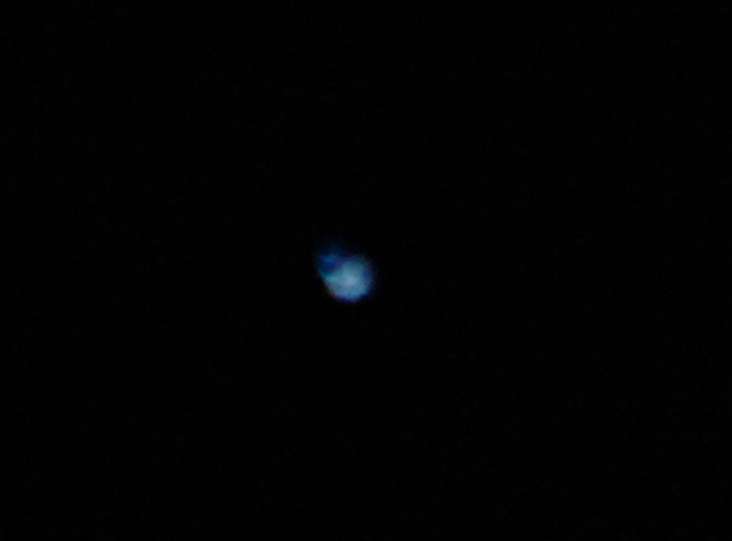January 13, 2016 report
Astronomers detect ultra-weak magnetic fields in two metallic-line stars

(Phys.org)—A team of astronomers led by Aurore Blazère of the Paris Observatory has discovered ultra-weak magnetic fields in metallic-line stars Beta Ursae Majoris and Theta Leonis. Motivated by a recent detection of a weak, circularly polarized signature in spectral lines of a similar type star, Sirius A, the researchers received a signal believed to be of a magnetic origin, using deep spectropolarimetric observations of these two peculiar stars. What they found may prove that weak magnetic fields could be more common in the photospheres of intermediate-mass stars.
Beta Ursae Majoris and Theta Leonis belong to a group of chemically peculiar Am stars. Their spectrum has strong and often variable absorption lines of metals such as zinc, strontium, zirconium, and barium and deficiencies of a few elements, particularly calcium and scandium. In the search for magnetic fields of these two interesting metallic-line stars, the scientists used data from the NARVAL spectropolarimeter, installed at the two-meter Bernard Lyot Telescope (TBL) in the French Pyrénées. They published a paper online describing their results on Jan. 8 in the arXiv journal.
NARVAL enables astronomers to detect stellar magnetic fields with unprecedented precision. It is specially designed and optimized to detect stellar magnetic fields through the polarization they generate in photospheric spectral lines. For their study, the scientists used data from NARVAL observation campaigns conducted from 2010 to 2014. Analyzing these data, they detected a circularly polarized signal coming from the two Am stars.
According to the astronomers, all signals observed up until now have roughly the same shape, with one positive lobe roughly symmetric about the line center and occupying most of the width of the line profile.
"The circularly polarized signal observed for both stars covers most of the width of the line and is mostly symmetric about the line centroid. In both cases, a positive lobe dominates the signal," the researchers wrote in the paper.
They assume that these signals must have a stellar origin as previous observations of an Am type star, Sirius A, show similarly shaped signatures. Sirius A was studied using three different scientific instruments including NARVAL, and according to the research team, these studies confirm their hypothesis regarding Beta Ursae Majoris and Theta Leonis.
"From an empirical point of view, we stress that the signatures recorded so far for Sirius A display a similar shape using three different instrumental setups and three different models of CCD detector and two different reduction pipelines, giving strong confidence in a stellar origin of the polarized signature," the paper reads.
The research provides new clues to the weak polarized signatures produced in the photospheres of intermediate-mass stars. It indicates that weak magnetic fields could be widespread in this stellar class. The study also leads to a conclusion that these signatures could be indirect tracers of surface convective motions.
However, some puzzling questions remain unanswered like the origin of this weak magnetism of Am stars. The paper offers only a few hints to the physical ingredients involved in the generation of these weak surface magnetic fields. This is due to a small number of Am stars observed so far and polarimetric signatures close to the detection limit.
The astronomers underline that a physical model able to produce a convincing reproduction of the peculiar polarized signatures reported for the type of stars described in their study still needs to be developed. They also note that unveiling surface features on weakly magnetic Am stars requires a very sensitive method, such as the one used in a previous study to detect very faint starspots on Vega. The new methods and models should advance our knowledge regarding physical origin and basic properties of these stellar magnetic fields.
More information: Detection of ultra-weak magnetic fields in Am stars: β UMa and θ Leo. arXiv:1601.01829 [astro-ph.SR] arxiv.org/abs/1601.01829
Abstract
An extremely weak circularly polarized signature was recently discovered in spectral lines of the chemically peculiar Am star Sirius A. A weak surface magnetic field was proposed to account for the observed polarized signal, but the shape of the phase-averaged signature, dominated by a prominent positive lobe, is not expected in the standard theory of the Zeeman effect. We aim at verifying the presence of weak circularly polarized signatures in two other bright Am stars, beta UMa and theta Leo, and investigating the physical origin of Sirius-like polarized signals further. We present here a set of deep spectropolarimetric observations of beta UMa and theta Leo, observed with the NARVAL spectropolarimeter. We analyzed all spectra with the Least Squares Deconvolution multiline procedure. To improve the signal-to-noise ratio and detect extremely weak signatures in Stokes V profiles, we co-added all available spectra of each star (around 150 observations each time). Finally, we ran several tests to evaluate whether the detected signatures are consistent with the behavior expected from the Zeeman effect. The line profiles of the two stars display circularly polarized signatures similar in shape and amplitude to the observations previously gathered for Sirius A. Our series of tests brings further evidence of a magnetic origin of the recorded signal. These new detections suggest that very weak magnetic fields may well be present in the photospheres of a significant fraction of intermediate-mass stars. The strongly asymmetric Zeeman signatures measured so far in Am stars (featuring a dominant single-sign lobe) are not expected in the standard theory of the Zeeman effect and may be linked to sharp vertical gradients in photospheric velocities and magnetic field strengths.
Journal information: arXiv
© 2016 Phys.org





















